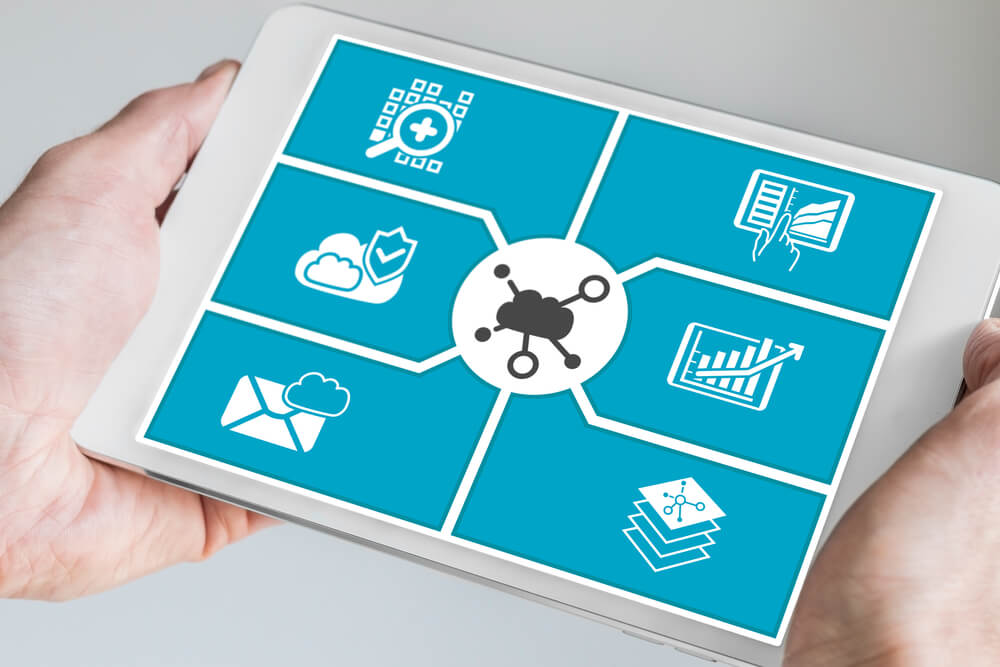
Make Your Digital Marketing Super Personal With SaaS Analytics
Personalization helps brands connect with their audience, increasing engagement, loyalty, and conversions. Software-as-a-service (SaaS) analytics can greatly empower marketers by providing valuable insights into customer behavior, preferences, and demographics.
Through the analysis of extensive data sets, SaaS firms create highly targeted and personalized campaigns that resonate with individual consumers on a more profound level.
This guide explores how SaaS analytics is crucial to creating personal digital marketing, covering the following points:
- Types of SaaS analytics.
- Using analytics with customer insights.
- Various personalization techniques.
- Ethical concerns.
- Increasing campaign performance.
Leveraging SaaS analytics takes expertise. Let a digital strategy consultant lead the way. Let’s go!
Are you looking for a full-service digital marketing agency? See the DAP difference below!
Exploration of SaaS Analytics
SaaS analytics fuel simple to complex marketing strategies. Marketers have to understand the impact of analytics on various aspects of marketing. One of the ways to do this is by exploring the different types of SaaS analytics.
1. Understanding the Different Types of SaaS Analytics
SaaS analytics platforms offer a diverse array of insights that could significantly enhance a company's understanding of its customer base. Here are the different types of SaaS analytics:
- User behavior analytics tracks interactions and usage patterns to understand how users engage with the product or service.
- Demographic analytics provides insights into user demographics such as age, gender, location, and income, aiding in targeted marketing efforts.
- Engagement metrics measure click-through rates, conversion rates, and time spent on specific pages to assess the effectiveness of marketing strategies.
- Customer satisfaction analytics evaluates customer sentiment, feedback, and overall satisfaction levels to identify areas for improvement and enhance the customer experience.
2. Leveraging Analytics for Customer Insights
SaaS analytics enables businesses to understand customer preferences and behaviors, guiding data-driven decision-making and customized offerings. Marketers apply user behavior data to identify popular features and pain points within their SaaS products or services. This allows strategic enhancements to improve overall customer satisfaction.
On the other hand, demographic analytics facilitate effective customer segmentation. Businesses can create targeted marketing campaigns tailored to specific groups for enhanced engagement and impact. With engagement metrics, companies may optimize their strategies, fine-tune campaigns, and allocate resources more efficiently, which maximizes their marketing initiatives.
Integrating customer satisfaction analytics supports the use of proactive measures to promptly address issues. Thus, this enhances the overall customer experience and fosters long-term loyalty and satisfaction.
Digital Marketing Personalization Techniques Using SaaS Analytics

Analytics promotes personalization in SaaS digital marketing campaigns, enhancing user engagement and conversion rates. Let us look at this in detail.
1. Analytics-Driven Personalization
Data and analytics can inform marketing messages, content, and campaigns by providing valuable insights into customer preferences and behaviors. By analyzing customer data, businesses are able to identify specific interests and needs, creating personalized content that resonates with individual consumers.
This information allows marketers to deliver targeted messages to the right audience at the right time, enhancing engagement and increasing SaaS customer conversions.
2. Enhancing Engagement and Conversions
Personalized marketing campaigns enhance user engagement by delivering tailored content and relevant offers. By catering to their preferences, businesses create a more immersive and customized customer experience, which creates a stronger connection and increases customer satisfaction.
This heightened engagement, together with a more personalized approach, creates a sense of brand loyalty and trust. This leads to higher conversion rates, as customers are more inclined to purchase when presented with offers that align closely with their preferences and desires.
3. Examples of Personalization
These examples explain how SaaS analytics helps with personalization.
- Personalized emails. SaaS businesses send targeted emails to customers with their names and relevant product recommendations based on past purchases. They might also use emails to inform recipients about exclusive offers tailored to recipients' preferences and browsing histories.
- Content recommendations. Firms provide users with personalized content recommendations on SaaS websites or streaming platforms based on their past viewing history, preferences, and similar user behaviors. These enhance their overall experience and encourage prolonged engagement.
- Targeted ads. SaaS companies display ads to specific groups of users based on their demographic information, interests, and browsing behavior, ensuring that the ads are more relevant and appealing to the targeted audience. Doing so increases the likelihood of click-throughs and conversions.
Ethical Manipulation
Part of using data for analysis and improving marketing campaigns is making sure that SaaS companies securely and ethically handle information. Using analytics ethically to create effective marketing strategies should provide a positive and transparent user experience.
1. Ethical Use of Data
Ethical data use in digital marketing with SaaS analytics includes transparent communication and customer consent. Solid data security measures must be implemented to protect customer information from unauthorized access or breaches.
SaaS firms use anonymization and aggregation techniques to safeguard customer privacy, ensuring that sensitive personal information remains protected. Part of their marketing efforts includes respecting customer privacy preferences and using intrusive tracking mechanisms.
Lastly, compliance with relevant data protection regulations and regular reviews of data handling practices are essential to maintain ethical standards and build trust with customers.
2. Transparency and Trust
Transparency in digital marketing using SaaS analytics creates a positive user experience and builds trust. By openly communicating with users about how their data is collected, processed, and utilized, businesses can develop a sense of confidence and credibility. These reassure users that their privacy is respected.
Clear explanations about the purposes of data collection and the benefits users can expect from sharing their information establish a more positive and engaging user experience. This transparency demonstrates respect for users' privacy and empowers them to make informed decisions about their data.
Ultimately, this commitment to transparency and user empowerment creates a relationship built on trust, which significantly enhances brand loyalty and customer satisfaction in the long run.
Increasing Campaign Performance

SaaS analytics-powered personalization improves the effectiveness and ROI of digital marketing campaigns. These strategies can significantly boost campaign performance.
1. Use Analytics-Powered Personalization for Better ROI
By customizing content and messaging to each user's preferences and behaviors, SaaS analytics-powered personalization increases the effectiveness of digital marketing. Businesses can create highly targeted and relevant marketing strategies that resonate with their target audience, improving engagement and conversion rates.
Considering analytics for personalization enhances customer satisfaction and loyalty and maximizes ROI by delivering personalized experiences to convert leads into long-term customers. Consider these techniques:
- Use SaaS analytics to gain insights into customer preferences and behaviors, enabling the creation of personalized content tailored to specific audience segments.
- Leverage analytics-powered personalization to provide customers with tailored product recommendations based on their past purchase history and browsing behavior.
- Employ analytics to analyze market trends, competitor pricing, and customer buying patterns, allowing businesses to implement dynamic pricing strategies.
- Use SaaS analytics to segment customers based on their preferences, behaviors, and purchase history, enabling the automation of personalized email campaigns.
Lastly, focus on analytics-powered personalization to create highly targeted and relevant advertising campaigns that reach the right audience at the right time. Tailoring ad content and placement based on customer demographics, interests, and behaviors allows businesses to improve ad performance, increase click-through rates, and achieve a better ROI.
2. Provide Measurable Improvements
Utilizing SaaS analytics for personalized digital marketing campaigns leads to measurable improvements in campaign performance. It leads to increased open rates, click-through rates, and conversions.
By tailoring content to individual customer preferences and behaviors, businesses may see higher open rates, as customers are more likely to engage with personalized content. In addition, implementing targeted messaging based on customer data improves click-through rates, driving more traffic to the desired landing pages.
Enhanced relevance and tailored approaches to personalized campaigns lead to increased conversions and efficient utilization of marketing resources. These strategies help create improvements in campaign performance by focusing on increasing open rates and click-through rates:
- Craft engaging and personalized subject lines that pique the recipient's interest, addressing their specific needs or pain points, to increase email open rates.
- Conduct regular A/B testing on various elements such as email content, subject lines, and call to action (CTA) buttons to identify the most effective combinations that drive higher open and click-through rates.
- Implement personalized content based on customer preferences and past interactions to create a sense of relevance and connection.
- Use clear and compelling CTAs that prompt recipients to take specific actions, such as clicking on a link or visiting a landing page.
Optimize marketing templates and landing pages for various devices to ensure a seamless user experience across desktop and mobile platforms. This enables recipients to effortlessly access and engage with the content, contributing to increased open and click-through rates.
3. Adapt Strategies Based on Analytics for Optimal Results
Marketers have to continuously monitor and adapt their strategies based on analytics for optimal results by regularly analyzing key performance indicators (KPIs) such as open rates, click-through rates, and conversion rates.
Closely tracking these metrics helps marketers identify trends and patterns, allowing data-driven decisions and alignment with customer preferences and behaviors. Here are several techniques for continuously monitoring and adapting marketing strategies:
- Conduct regular assessments of KPIs to identify trends and areas for improvement.
- Perform A/B testing on various elements of marketing campaigns, including email content, subject lines, and CTA buttons, for the most effective strategies for engaging target audiences.
- Integrate customer feedback loops, surveys, and reviews to gain valuable insights into customer preferences and satisfaction levels.
- Utilize dynamic content optimization techniques to deliver personalized and relevant content to different customer segments.
- Implement an agile approach to strategy adjustments so that marketers are able to quickly respond to changes in market trends and customer preferences.
Summing Up
Using SaaS analytics for digital marketing allows marketers to create highly personalized campaigns that resonate with their target audiences, increasing engagement and conversion rates.
Data-driven insights help marketers understand customer behaviors and preferences and tailor their strategies for maximum impact and relevance. Ethically harnessing the power of SaaS analytics enables marketers to build stronger customer relationships based on trust and transparency, fostering brand loyalty and long-term success.
Encouraging exploration and ethical utilization of SaaS analytics can position marketers at the forefront of innovation. These drive excellent results and deliver exceptional value to customers and businesses.
Learn more about how analytics can improve your SaaS company’s digital marketing efforts. Contact Digital Authority Partners (DAP) today.
Want To Meet Our Expert Team?
Book a meeting directly here




